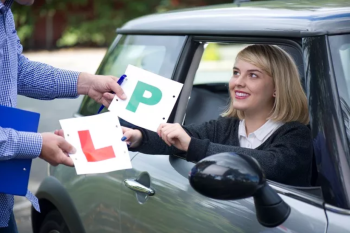
Attending the practical car driving test
What you will have to do
 Attending the practical test makes most people nervous, but there's really no need to be. If you are ready for the test then you will soon overcome your nerves. The examiner will be on your side - he or she really does want you to pass!
Attending the practical test makes most people nervous, but there's really no need to be. If you are ready for the test then you will soon overcome your nerves. The examiner will be on your side - he or she really does want you to pass!
What you will have to do during the test
The driving test takes about 40-45 minutes. Most test routes involve town driving and where possible, single and dual carriageway roads outside 30 mph limits. First you will meet the examiner in the test centre.
You must have three vital documents with you:
- Your signed provisional driving licence.
- Your theory test pass certificate.
- An appointment letter
You will have your appointment letter sent to you in advance through the post. Test centres are usually modern, well appointed places and you have nothing to fear from the examiner.
Hints for attending the test
There's no magic formula for passing your driving test - but here are my top ten tips that will certainly be helpful.
- Get a good night's sleep before the test
- Dress comfortably - make yourself feel good
- Have confidence in your ability
- Don't talk to everyone about your test
- Make sure you are fed and watered
- Think positively
- Get to the test centre early
- Don't rush when getting in the car
- Follow your examiner's instructions carefully
- Ask him/her to reapeat them if you are not sure
Listen carefully to the examiner's instructions, act on them in good time, and ask for them to be repeated if necessary.
Give the examiner a beautifully smooth drive, one that both of you can enjoy. If you make a decision that you think could be misjudged by the examiner, explain your reasons while you drive. Maintain your best standard to the very end of the test.
The examiner just wants to see what you would normally do - nothing that you do not already know. If you come across a new situation, hold back and assess it carefully before you decide to proceed and be prepared to change your decision if necessary.
The most common reasons for failing the test:
- Taking the test too soon, with insufficient driving experience
- Driving differently from normal (e.g. faster or slower)
- Reduction or loss of concentration, creating driving errors
- Impairment of assessment and decision-making abilities creating driving errors
- Inadequate driving skills because of poor teaching
